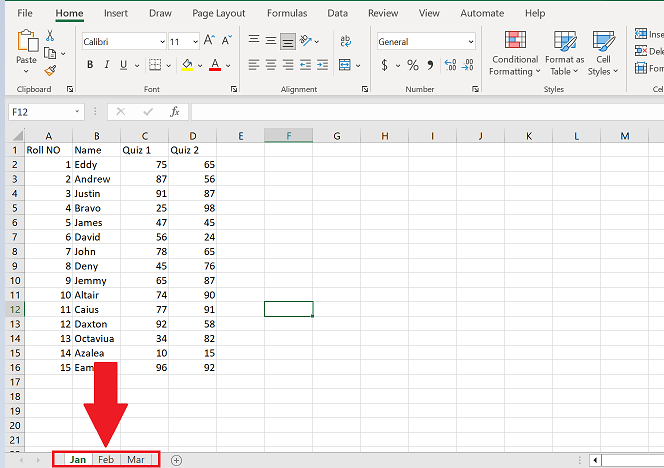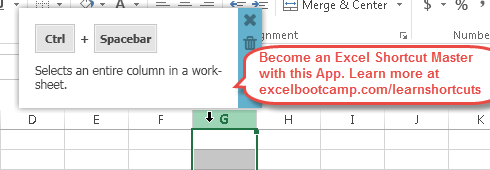Find All Sheets in Excel: The Ultimate Guide

Discovering and managing multiple sheets within Microsoft Excel can be a daunting task for both novice and seasoned users. With the advancement of Excel's features, the complexity of working with workbooks has only grown. This guide provides a comprehensive walkthrough on how to find all sheets in Excel, optimize your workflow, and enhance your proficiency in Excel.
Why Managing Sheets in Excel is Important

Excel sheets are the backbone of data organization, analysis, and presentation. Efficiently finding and manipulating sheets can:
- Reduce clutter and improve navigation in large workbooks.
- Save time during data processing and analysis.
- Enhance collaboration by ensuring team members can locate relevant sheets quickly.
- Facilitate seamless data import and export for streamlined workflows.
📋 Note: This guide assumes basic familiarity with Microsoft Excel.
Basic Navigation in Excel

Before delving into complex operations, let’s review some fundamental navigation techniques in Excel:
- Sheet Tabs: The bottom part of your Excel window displays sheet tabs. Click these to switch between sheets.
- Right-Click Menu: Right-clicking on the sheet tabs reveals options to manage sheets like inserting new sheets, deleting sheets, etc.
- Keyboard Shortcuts: Use keys like Ctrl + PgUp or Ctrl + PgDn to quickly move between sheets.
How to Find All Sheets in Excel

Finding all sheets within an Excel workbook involves several methods:
1. Manual Scroll and Search

The simplest method is to manually scroll through the sheet tabs at the bottom:
- Scroll the sheet tabs using the arrows on either side.
- If there are many sheets, Excel automatically condenses the tab area, so clicking and dragging with your mouse can help reveal additional sheets.
2. Using the VBA ‘Find’ Feature

VBA (Visual Basic for Applications) can automate the process:
Sub FindAllSheets()
Dim ws As Worksheet
Dim i As Integer
i = 1
For Each ws In ThisWorkbook.Worksheets
Cells(i, 1).Value = ws.Name
i = i + 1
Next ws
End Sub
This VBA macro will list all sheet names in the first column of the current active sheet.
🛑 Note: Running VBA macros requires enabling macros in your Excel settings.
3. Advanced Filter Feature

If your workbook has a listing of sheet names somewhere, you can use Excel’s Advanced Filter:
- Navigate to Data > Advanced to open the Advanced Filter dialog box.
- In the list range, select where the sheet names are listed.
- Use an empty area on the sheet to apply the filter criteria.
4. Workbook Statistics

View workbook statistics to get a comprehensive overview of the workbook structure:
- Go to File > Info.
- Scroll to ‘Workbook Statistics’ for details like sheet names, cell counts, and formulas.
Organizing Sheets for Better Management

To make finding sheets more efficient:
- Color Code Sheets: Right-click a sheet tab and choose ‘Tab Color’ to assign colors.
- Group Sheets: Ctrl-click or Shift-click to select multiple sheets for simultaneous editing.
- Reorder Sheets: Drag sheet tabs to new positions or use the context menu.
Customizing Your Excel Experience

Personalize Excel to streamline the process of finding sheets:
- Modify Excel Ribbon with your frequently used sheet management tools.
- Save commonly used VBA scripts in the Personal Macro Workbook for easy access.
By implementing these techniques, you can significantly improve your Excel experience, making sheet management an effortless part of your workflow. Whether you're working with small or large datasets, these skills will help you navigate through Excel's vast capabilities with ease.
Optimizing your Excel proficiency involves continuous learning and adaptation. Keeping your skills up-to-date ensures you’re utilizing the most efficient methods for data management and analysis. Remember, the key points include:
- Efficient navigation using basic and advanced features of Excel.
- Utilizing tools like VBA for automated processes.
- Implementing customization and organization strategies to simplify your work.
How can I quickly switch between sheets in Excel?

+
Use the keyboard shortcuts Ctrl + PgUp to move to the previous sheet and Ctrl + PgDn to go to the next sheet. You can also click on the sheet tabs at the bottom of the Excel window to navigate manually.
Can I see all sheets in a workbook at once?

+
Not all at once visually, but you can list all sheet names using VBA or the Workbook Statistics in File > Info for a detailed overview.
What if I accidentally delete or hide a sheet?

+
If you delete a sheet, it’s gone unless you have an unsaved backup or undo the action quickly. To unhide a hidden sheet, right-click on any visible sheet tab, select “Unhide,” and choose the sheet to unhide.
Is there a way to search for specific content within all sheets?

+
Yes, you can use the Find & Select feature in Excel, but it requires you to search each sheet individually or use VBA to search through all sheets at once.